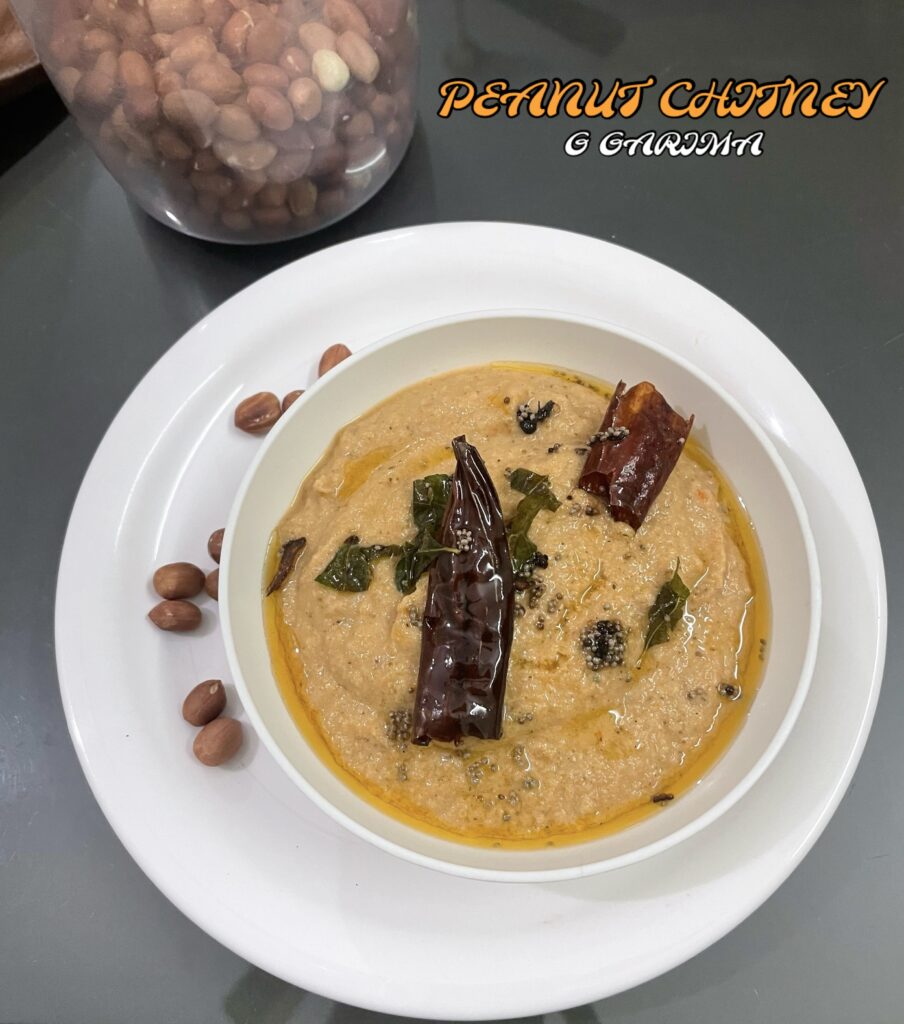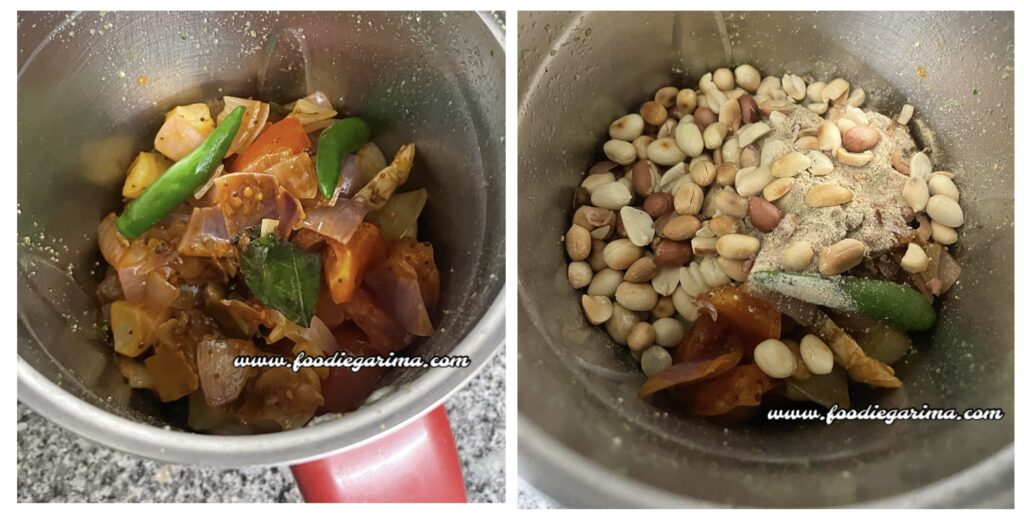8 February, 2024
Peanut Chutney Recipe including Onions and Tomatoes | Peanut Dipping Sauce

Peanut Chutney Recipe | Peanut Dipping Sauce
Peanut Chutney is a delightful condiment that adds a burst of flavors to your meals. Whether you are a fan of spicy, tangy, or sweet, this versatile chutney can be customized to suit your taste buds.
Recipe Twist
I have prepared this Peanut Chutney inspired by the authentic recipe, with a subtle yet distinctive twist introduced by my mother. While the traditional rendition of this Chutney excludes Tomatoes, my adaptation incorporates this tangy element, imparting a unique flavor profile.
This modification, rooted in my mom’s culinary innovation, adds a delightful dimension to the Peanut Chutney without compromising its authentic essence.
Serving Suggestions
Peanut Chutney pairs exceptionally well with various dishes, including Dosas, Idlis, and Rice. Additionally, try it as a Dipping Sauce for snacks like Samosas or spread it on Sandwiches for an extra kick.
Health Benefits of Peanuts
Peanuts are not just tasty; they also pack a nutritional punch. Rich in essential nutrients, Peanuts contribute to heart health, provide a good source of protein, and offer sustained energy. Including Peanuts in your diet through Chutneys is a delicious way to make your meals both flavorful and nutritious.
Let’s get started with the Peanut Chutney Recipe.

INGREDIENTS
| For Peanut Chutney | For Tempering (Optional) |
|---|---|
| 70 Grams Roasted Peanuts | 2 tsp Oil |
| 2 tsp Mustard Oil | ½ tsp Mustard Seeds |
| 1 tsp Mustard Seeds | Curry Leaves (a sprig) |
| 3 – 4 Onions | 2 Dry Red Chillies |
| 3 Tomatoes | |
| 1 inch Ginger | |
| 2 Green Chillies | |
| Curry Leaves (a sprig) | |
| Salt to Taste (or 2 tsp) | |
| ¼ tsp Black Salt | |
| 1 tsp Chaat Masala | |
| ½ tsp Amchur (Dried Mango Powder) | |
| 1 tsp Coriander Powder | |
| Water as needed |
STEP-BY-STEP RECIPE GUIDE FOR PEANUT CHUTNEY
1. Pre Preparation
- If you don’t have roasted Peanuts, then begin by roasting Peanuts until they turn golden-brown. Set aside.
- Cut Onions and Tomatoes into big chunks or diced pieces.
2. Sautéing

- Heat Mustard Oil in a pan.
- Add Mustard Seeds and let them splutter.
- When Mustard Seeds splutter, add Onion and Tomato pieces.
- Sauté until Onions become translucent and Tomatoes turn soft.
- Introduce Curry leaves and cook it a little bit.
- Turn off the heat and allow this sautéed mixture to cool down at room temperature before proceeding for grinding.
3. Adding Peanuts and Spices

- Once the sautéed mixture cools, transfer it to a blender.
- Add Green Chillies, Roasted Peanuts and season with Spices – Salt, Black Salt, Chaat Masala, Amchur Dried Mango Powder), and Coriander Powder.
- Experiment with the ratio of Peanuts to other ingredients to find your perfect balance.
- If desired, add either Dry Red Chillies or Red Chilli Powder also for an additional heat.
4. Grinding

- Add half cup Water or as needed to reach the preferred thickness.
- Grind the mixture until you achieve the desired consistency. Some prefer a coarse texture, while others enjoy a smoother chutney.
- Blend accurately to ensure all ingredients are well incorporated.
- Transfer the Chutney to a serving bowl.
- For an extra touch, you can garnish it with a tadka (tempering) of Mustard Seeds and Curry Leaves in hot Oil.
5. Optional Garnish For Peanut Chutney

- Ensure your Peanut Chutney is already blended to the desired consistency and is ready for tempering.
- In a small pan, heat Oil over medium heat.
- Once the Oil is hot, add Mustard Seeds, fresh Curry Leaves, and Dried Red Chillies to the pan.
- Let them splutter, which will release a fragrant aroma.
- Be cautious, as ingredients may splatter a bit in the hot Oil.
- Once the tempering is ready, immediately pour it over the prepared Peanut Chutney.
Peanut Chutney with a traditional tadka is now ready to be served. The tempering adds an extra layer of flavor and texture to the Chutney, elevating its taste profile.
This delightful Peanut Chutney offers a perfect blend of nuttiness, tanginess, and spiciness. Experiment with the spice levels and consistency to suit your taste preferences.
Peanut Chutney in Different Cuisines
In South Indian cuisine, Peanut Chutney is a staple, often served alongside Dosas and Idlis. However, its popularity extends globally, with different cuisines adopting and adapting this flavorful condiment to suit their dishes.
